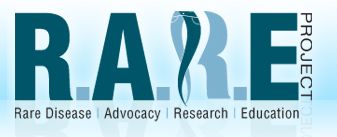Organ Donors, Thalassemia, and Appropriations
Greetings readers!
Sorry it has been a while since my last post. Let’s see, what have we missed? Hope everyone had a fantastic July 4 weekend! Since I last saw all of you we had the holiday, and I spent some time in New York City. During the New York trip I checked out the exhibit “As Within, So Without” at the Lyons Wier Gallery, of which 10% of the proceeds benefited Donate Life NY, the New York Organ Donor Network. The exhibition will be showing until tomorrow July 20, 2010:
“As Within So Without” is artist David Foox’s (“FOOX”) first solo show in New York since 2008 and incorporates FOOX’s unique and unconventional aesthetic and style. FOOX will be showcasing a series of painted X-rays from a variety of notable and influential personalities, including his own heart and chest, in an effort to raise awareness for organ donation and to demonstrate that each and every one of us are all from the same source. By bringing together the body with the spirit, FOOX hopes to help raise awareness for organ donation while also emphasizing the importance of unity amongst mankind. “As Within So Without” is an NYC exhibition of artwork and Custom Organ Donor Dolls by John Dunivant, David Foox, Kooks Malooks, Audrey Pongracz, and Ron Zakrin.
I also had an opportunity to catch up with Alyssa, National Fundraiser for the Cooley’s Anemia Foundation (CAF), who caught us up on the latest in the fight against thalassemia, a fatal genetic blood disorder also called Cooley’s anemia:
Thalassemia comes from Greek words Thalassa or “sea” and Haema or “blood”. Thalassemia is particularly associated with people of certain backgrounds, especially those of Mediterranean, Middle Eastern, northern African, south Asian, southeast Asian, Chinese or Caribbean origin. For instance, the Maldives has a carrier rate of 18% of the population, and estimated prevalence is 16% in people from Cyprus. In Thailand, some estimates indicate that one-third of the population carries the trait for thalassemia.
The disease is an inherited autosomal recessive blood disease, which results in a reduced rate of the synthesis of one of the globin chains that makes up hemoglobin. People whose hemoglobin does not produce enough alpha protein have alpha thalassemia. People whose hemoglobin does not produce enough beta protein have beta thalassemia. People with thalassemia minor have one of a pair (heterozygous) of the thalassemia gene and are considered “carriers” of thalassemia; they usually suffer no ill effects, aside from an occasional mild anemia. If a person has two copies of the gene, they will have thalassemia major, which is the most severe form of chronic familial anemias that result from the premature destruction of red blood cells (hemolytic). People with thalassemia major require lifelong blood transfusions, as often as every two weeks and must also undergo a daily drug treatment. In addition, they are subject to a wide range of complications, such as heart and liver failure, diabetes, pulmonary hypertension, osteoporosis (beginning as teen-agers) and blood borne infections such as hepatitis. Life expectancy is significantly below normal.
Click here to learn more about the different types of thalassemia.
The Cooley’s Anemia Foundation funds medical research in order to advance treatment and find a cure for thalassemia; provide valuable patient services; and eduates the public, at-risk populations, medical professionals, and government officials about thalassemia. Thanks to their efforts, patients are now living longer and fuller lives; but with many still dying in their 20s, often of cardiac failure, there is still a great deal more that needs to be done. (Donations can be made by clicking here.)
Cooley’s Anemia Foundation have also worked with the Arizona Diamondbacks on a special fundraiser to “help strike out thalassemia”. On Saturday, August 7, 2010, when the Diamondbacks retire Luis Gonzalez’ #20, a portion of the game sales will be donated to CAF to help Arizona families fight thalassemia. Click here for more information.
A Journey of Courage and Hope
I Want to Feel It All
Carol Alt PSA
July has also been an exciting month on the hill, as Kakkis Everylife Foundation reported July 16 that:
“The Senate Appropriations Committee will now review the FY 2011 Agriculture, FDA, and Rural Development Appropriations Bill. The bill includes the first increase for the Orphan Product Development Grant program since FY 2005. The program is increased by $2,000,000 for a total grant level of $16,035,000. The Bill also includes specific funding for the Office of the Associate Director for Rare Diseases in the Center for Drug Evaluation and Research (CDER). Funding for this office is increased by $1,000,000 to hire additional staff with specific expertise in facilitating the development and review of products to treat rare diseases.”
Coming up on Wednesday, the Senate HELP Committee will hold a full committee hearing, for “Treating Rare and Neglected Pediatric Diseases: Promoting the Development of New Treatments and Cures”. The hearing will be at 10:00am in Room SD-430.
Lastly, I attended the Genetic Alliance Gene Screen on July 15, as a part of their 2010 Annual Conference “Advancing Novel Partnerships”. The film screening featured the stories of Darius Goes West, Mito-Kids, The Power of Two, On Beauty, and many others!
————————————————————————————————————————
Follow @MarbleRoad on Twitter for all the latest news.









